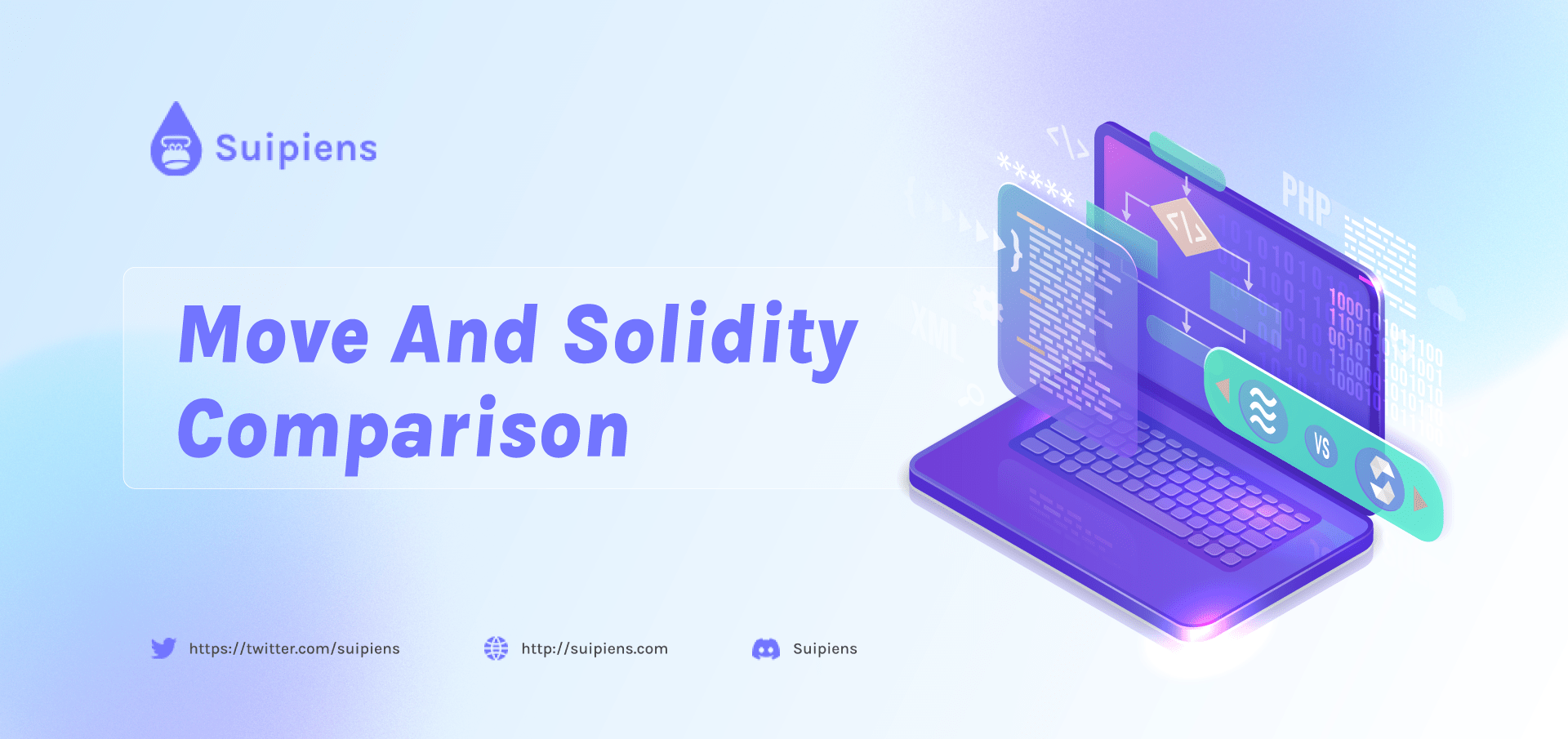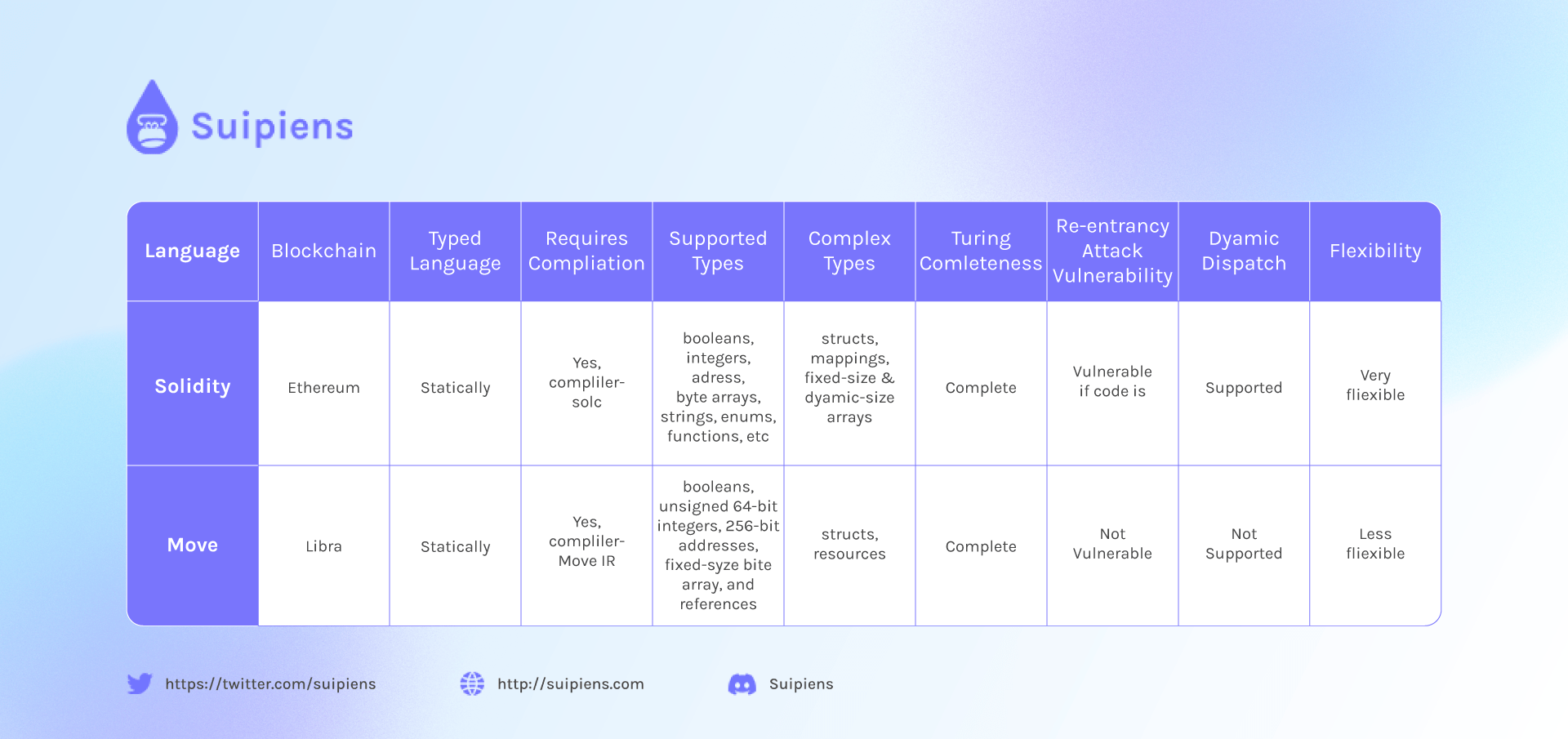Move And Solidity Comparison

Our Move and Solidity comparison will show you the key differences between two smart contracts so you can decide which language is best suited for your specific needs.
Introduction
Are you looking to build decentralized applications using the blockchain? Then you’ll need to know about both Move and Solidity, two important programming languages for building smart contracts. Both offer unique features for developing secure and reliable apps, but there are some key differences between the two that you should be aware of before making a decision on which language to use. In this blog post, we will dive into an in-depth Move and Solidity comparison so that you can decide which language is best suited for your specific needs.
What Is Move?
The Diem blockchain can be implemented using the Move programming language as the framework. It enables programmers to make applications that support dynamic asset management and transfers, improving asset security. Additionally, the Move programming language was developed with a number of important use cases outside the blockchain industry in mind.
Move does not allow you to copy or fully remove any resources. Resources, on the other hand, can only be moved between the websites that are hosting the application. Those safety assurances are statically enforced by Move's type system. Resources are simply standard program values notwithstanding the added security.
You can read our article on Notable Move Programming Language Projects to learn more about the numerous projects that employ the Move programming language.
What Is Solidity?
Currently, Solidity is the favored language for developing smart contracts. It was developed expressly to be used with the Ethereum network's smart contracts. The Ethereum Virtual Machine and other blockchain development platforms can implement smart contracts using Solidity, which was developed by the principal creators of the Ethereum network.
It is an object-oriented programming language that enables developers to create scripts that run automatically using business logic. Most notably, the JavaScript syntax, which makes it simpler for developers to grasp and use JavaScript, served as the design inspiration for Solidity.
Move And Solidity Comparison: Key Difference Between Smart Contract Languages

Blockchain Platform
The supported blockchain platforms are what set Solidity and Move apart from one another. Move is the best programming language for Diem blockchain applications, whereas Solidity has been modified to run on the Ethereum blockchain.
Need for Compilation
Once the code has been written, it must be executed, and the compiler is a crucial component of that process. The distinction between Solidity and Move is also based on the requirement to compile in computer languages. There are two languages that need compilation: Solidity and Move. While the Move feature uses a compiler called Move IR, Solidity uses a compiler called solc.
Supported Data Types
The kinds that are supported by programming languages for smart contracts will certainly be the next significant differentiator. Booleans, enums, functions, addresses, integers, strings, byte arrays, and other data types are supported by Solidity. Move supports Booleans, references, unsigned 64-bit integers, fixed-size byte arrays, and 256-bit addresses.
Complex Types
Complex types including structures, fixed-size arrays, dynamic sizes, and mappings are supported by solidity. However, Move offers assistance for resources and structures in the form of complex types.
Turing Completeness
Another crucial factor used to differentiate smart contract programming languages is their "Turing completeness." Programming languages Solidity and Move are both Turing complete.
Vulnerability to Reentrancy Attacks
One of the major security issues for smart contracts is reentrancy attacks. When a user develops a function that has the ability to contact an untrusted contract externally before any impact is resolved, a reentrancy attack may take place. Reentrancy assaults are notably susceptible to Solidity. The vulnerability of the code determines how susceptible Solidity is to re-entry attacks. In contrast, Move does not have any weakness to reentrancy assault worries.
Dynamic Dispatch
Given that it contains support for dynamic dispatch, Solidity plays an unexpected role in this situation. Dynamic dispatch is not supported by Move, though.
Flexibility of Use
Flexibility in use is one of the most crucial aspects for a successful comparison between Solidity and Move. In reality, usability will play a big part in a person's decision to employ a smart contract programming language. In comparison to the other two players, Solidity offers the most adaptable usability. The Move is the second most flexible.
Final Thought
It is impossible to determine with absolute certainty which programming language is superior—Move or Solidity. Essentially, the three languages share the features of statically typing and support for integer and Boolean data types. The two widely used smart contract creation languages, however, demonstrate that they each have very significant value advantages that are well suited to the blockchain, which is now undergoing development.
Be sure to check out Suipiens website and social media channels to stay up-to-date on all things about Sui Blockchain!

